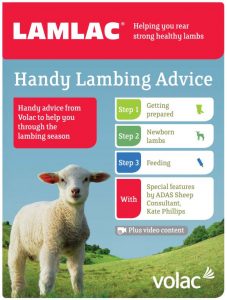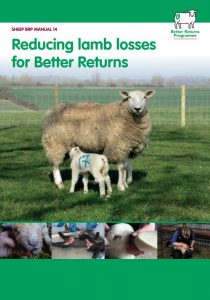The British weather, flock composition, available space and availability of labour and just a few of the factors that should be considered when determining which system is best for your farm.
Lamb survival
Indoor or outdoor lambing
Lamb survival target rates
15% of lambs born annually do not survive. 50% of these losses will occur within 24 hours after birth.
It is possible however for well performing flocks not to exceed lamb mortality rates of 5%.
Here is what you should be aiming for:
<5% Scanning to lambing
<5% During lambing and first week of life
<2% First week to weaning
<2% Weaning to sale or retention
The major causes of lamb losses:
- Abortion and stillbirths
- Exposure and starvation
- Infectious diseases
- Congenital defects
- Predators and misadventure
Birth weights
To ensure lamb birth weights are optimal (i.e. not to large or small) care must be taken when feeding the ewes. Lambs which are on the smaller side often fail to consume adequate colostrum. If lambs are on the large side, there is a risk of complications occurring during lambing. It is therefore vital to feed ewes in relation to litter size and avoid under/over feeding.
Colostrum
It is important that lambs ingest 50ml/kg of colostrum within four-six hours after birth. They should consume a total of 200ml/kg over the first 24 hours of life.
Outdoor lambs will require more colostrum than their indoor counterparts.
However, up to 22% of ewes produce inadequate colostrum for the lamb (<50 g/L immunoglobulin G) The quality of colostrum is affected by ewe colostrum, ewe parity and ewe health.
Turn out
High losses can occur at turn out if lambs are weak and/or mis-mothering is an issue. Field boundaries should also be kept secure to prevent lambs becoming separated from their mothers and to prevent predators gaining access.
Exposure and starvation
Exposure and starvation is the biggest cause of lamb deaths. Exposure and/or leads to hypothermia as the lamb cannot maintain its body temperature. Mis-mothering, mastitis, inadequate milk production, injury and illness are all factors that can result in starvation. A sign that lambs are stealing milk from other ewes is lambs with dirty necks.
Prevent mis-mothering
Ewes that have a good body condition score, are well fed, and are not disturbed during lambing tend to be good mothers. However, disruption during lambing times can cause ewes, particularly young ewes to abandon their new born offspring.
It is important to investigate excessive mortality rates in order to improve management practices and reduce deaths in the future.
<3% Ewe losses
<5% Lamb losses
<2% Barren ewes at scanning

